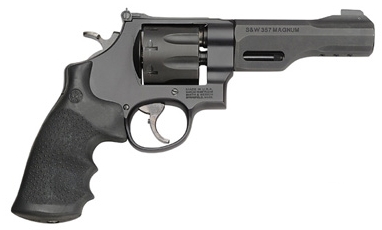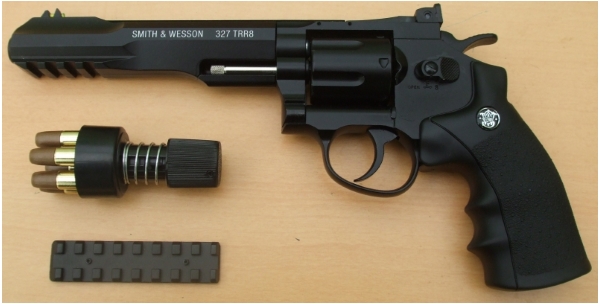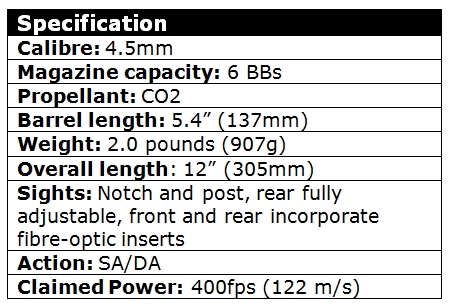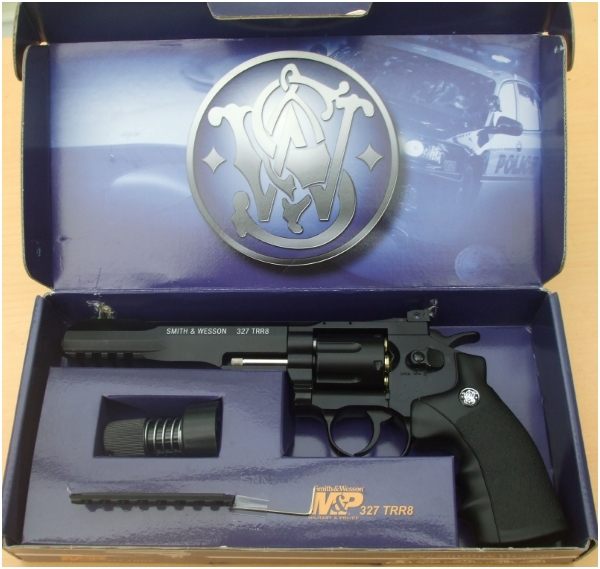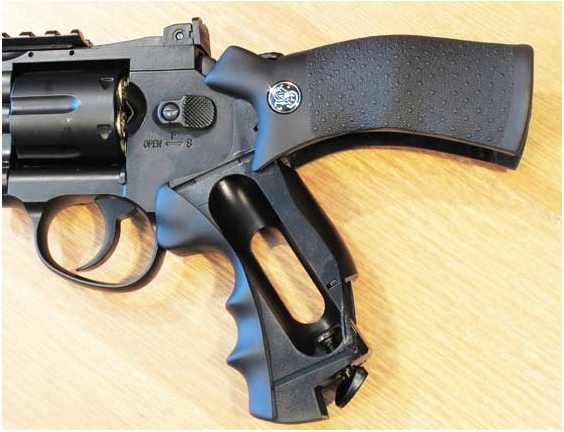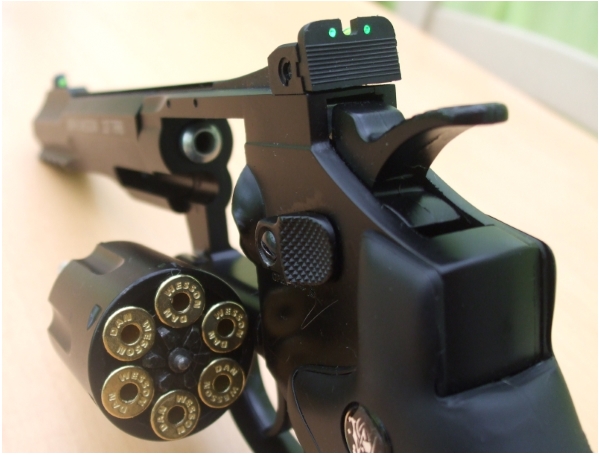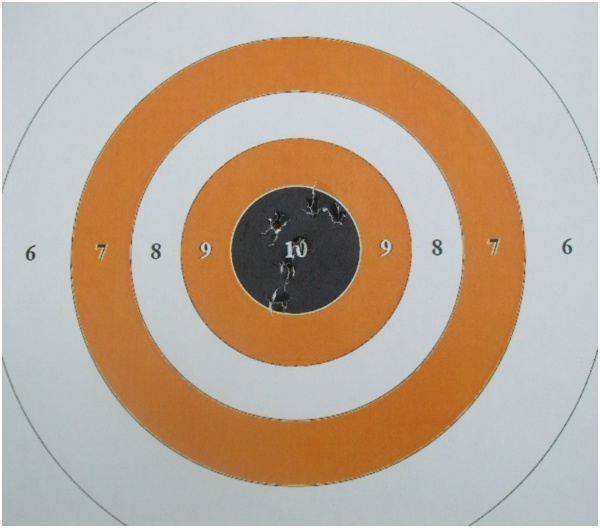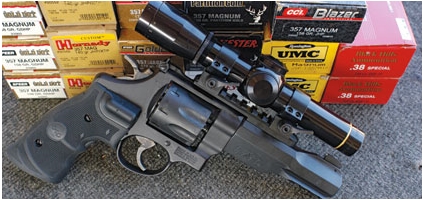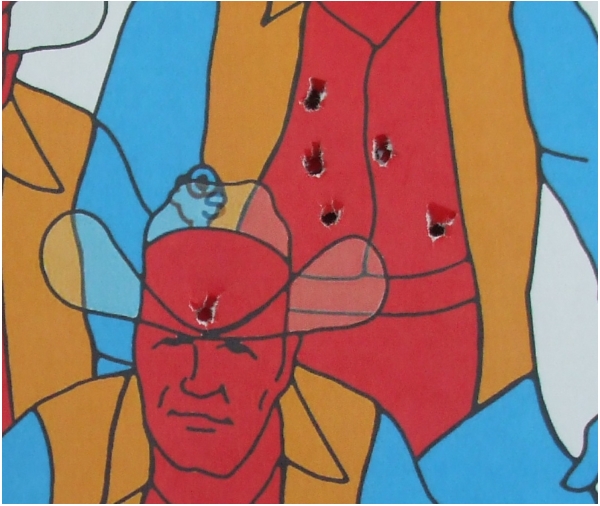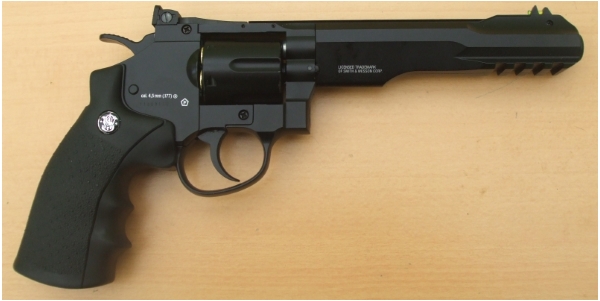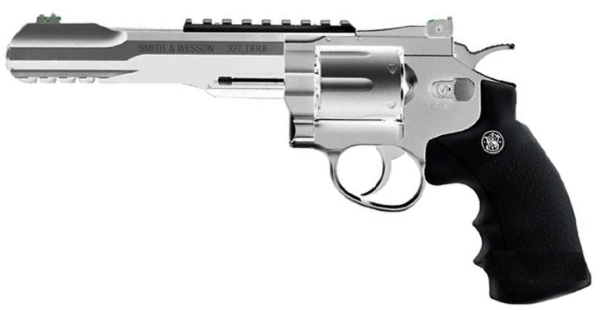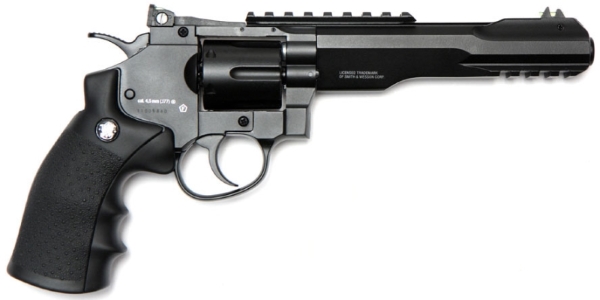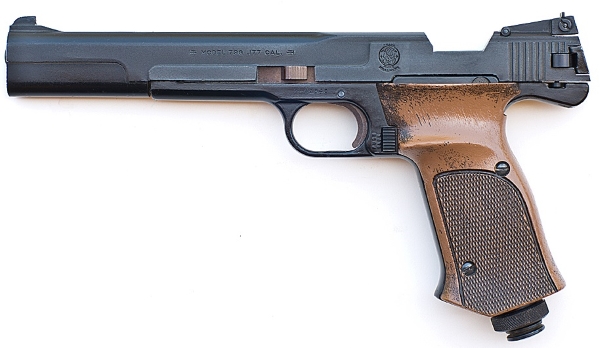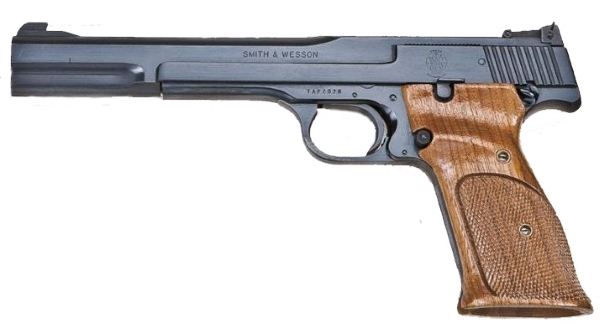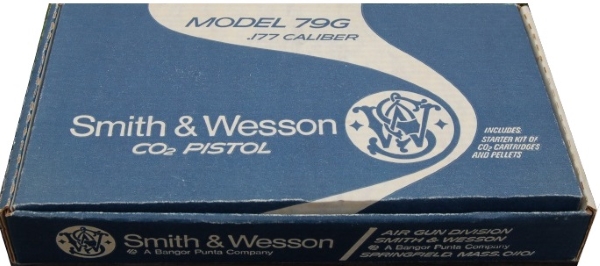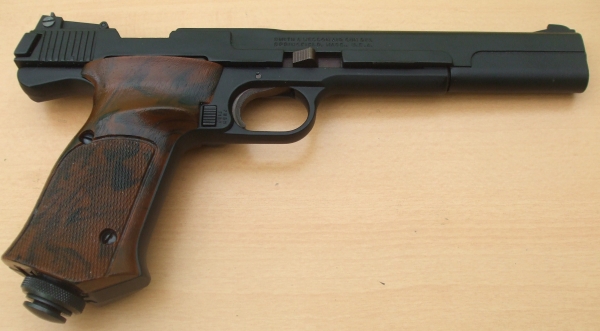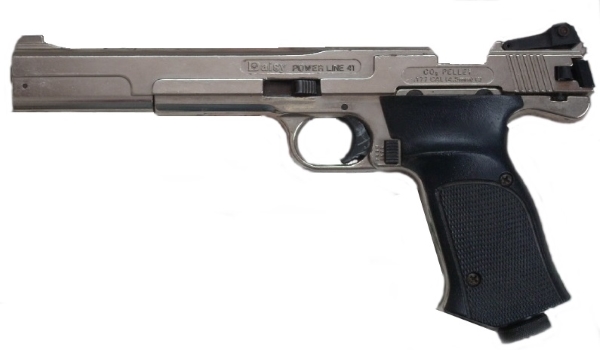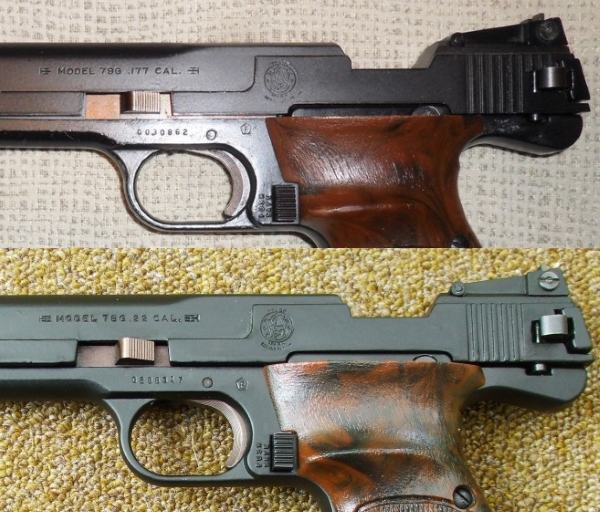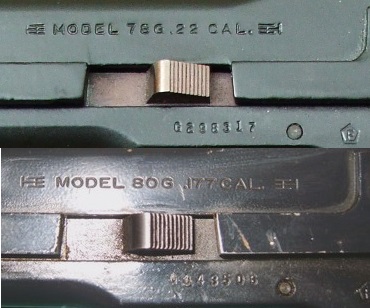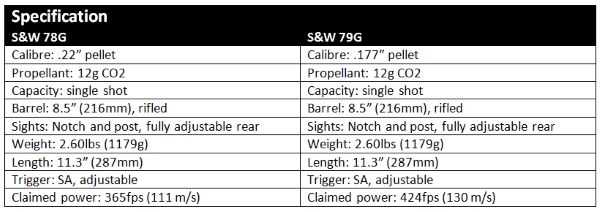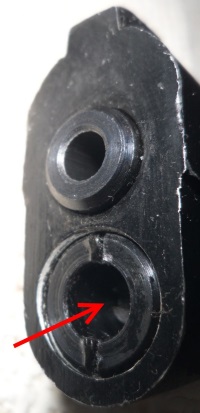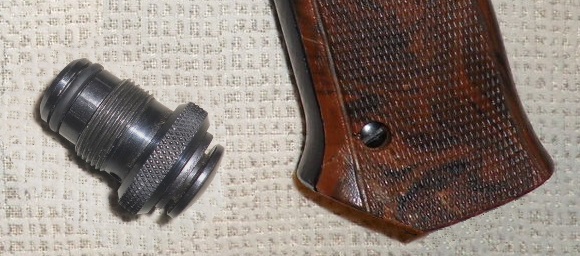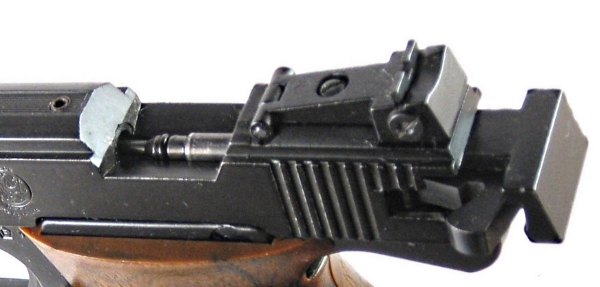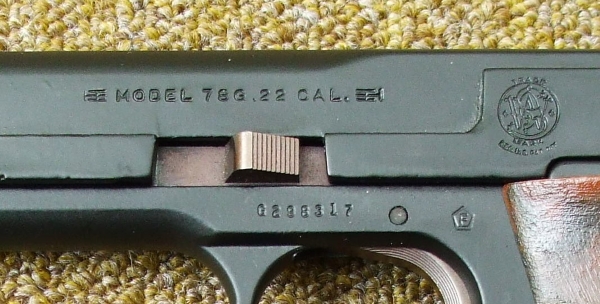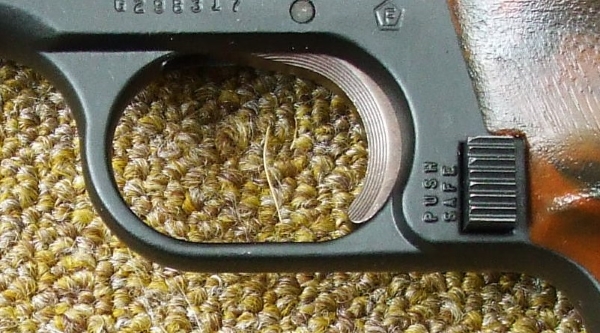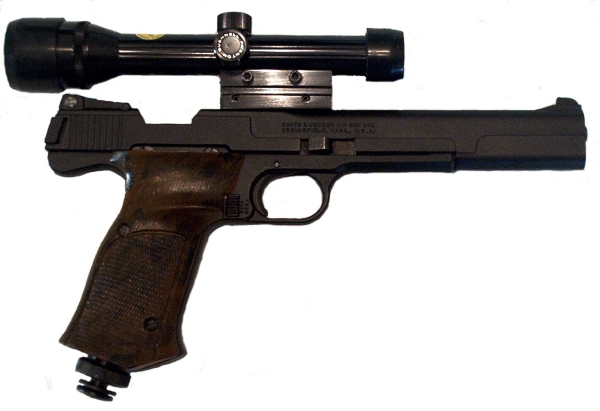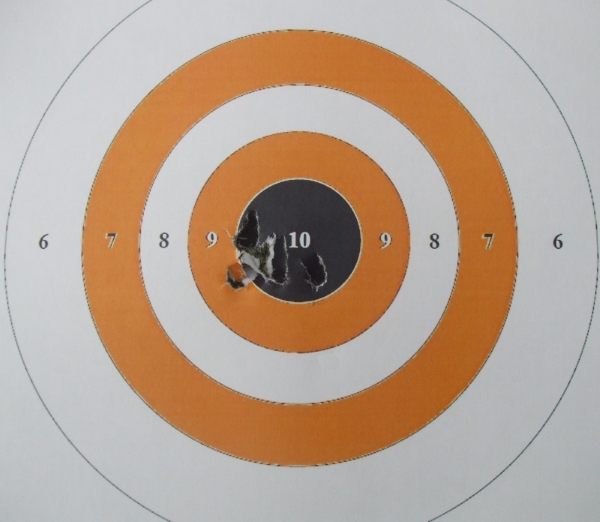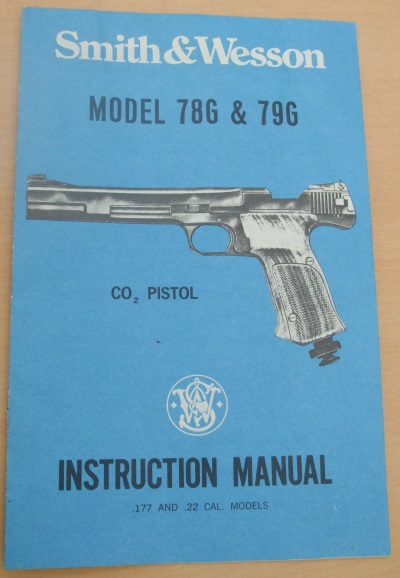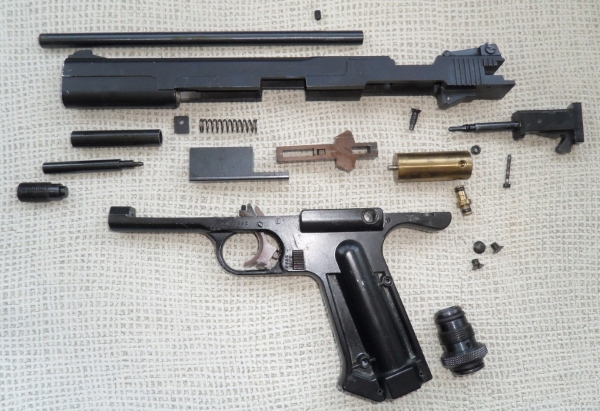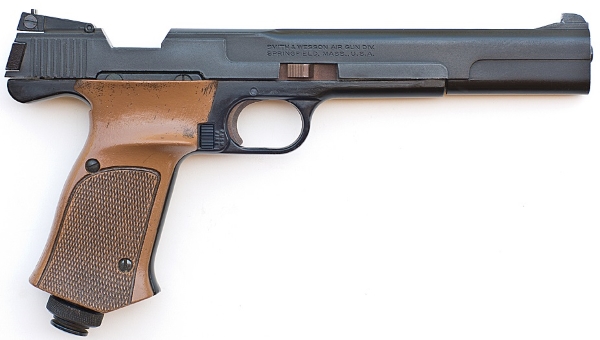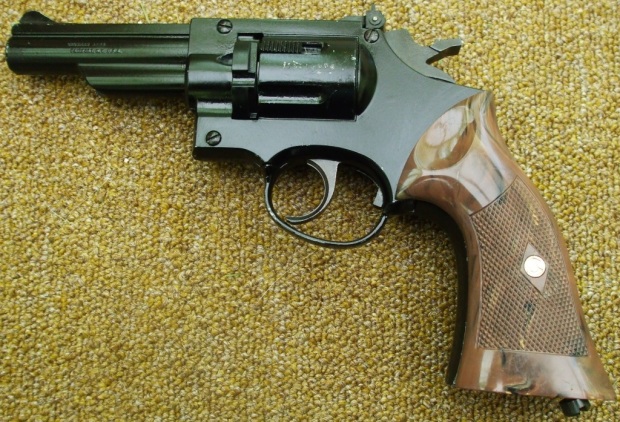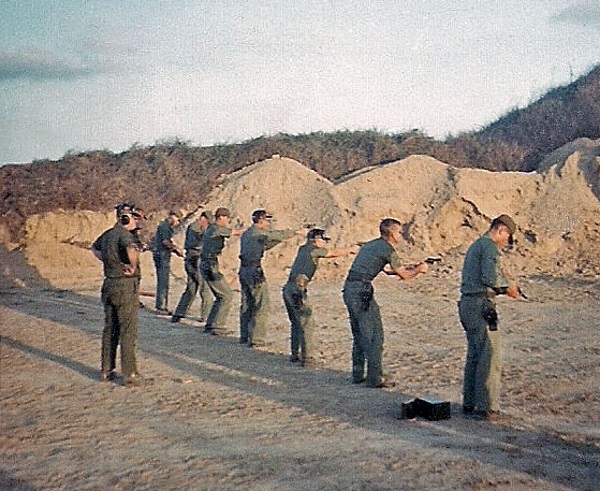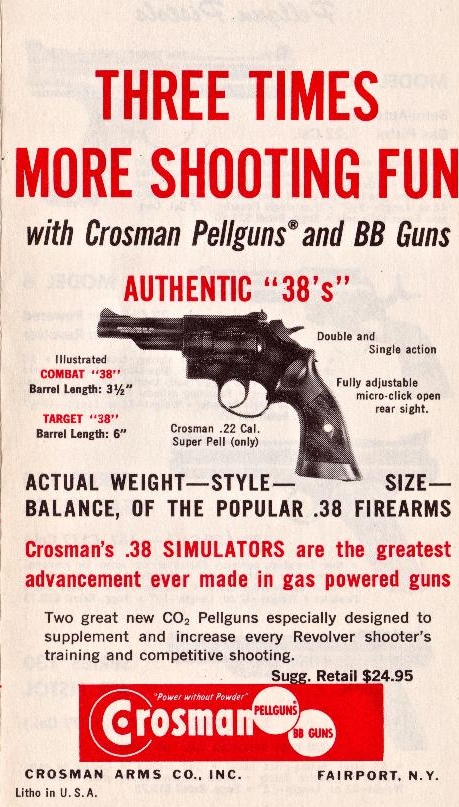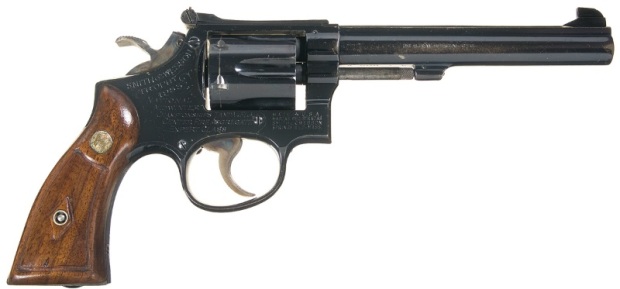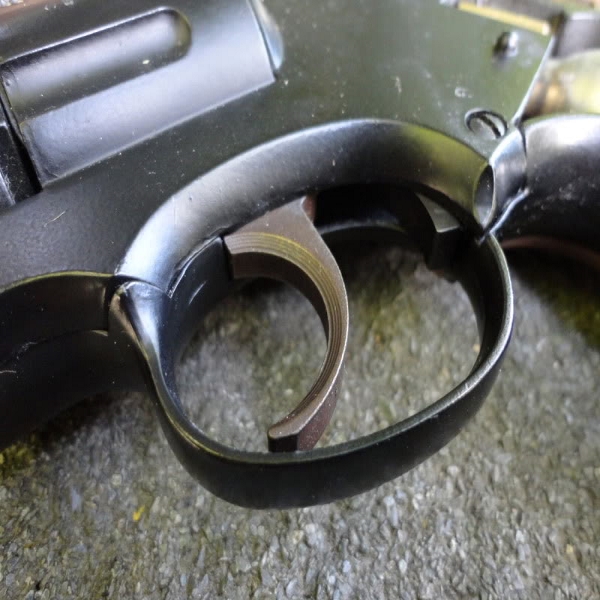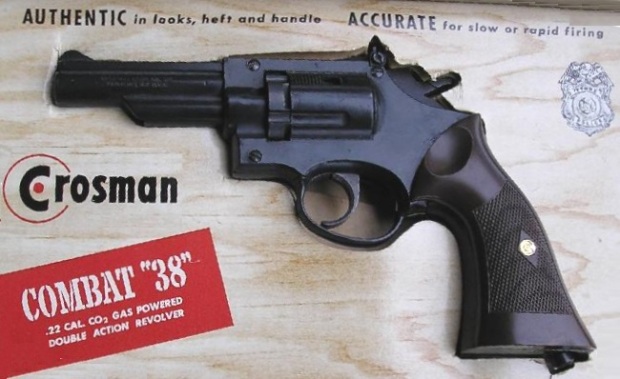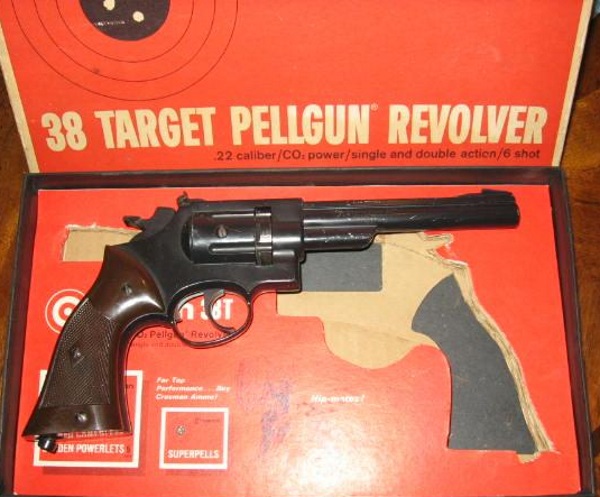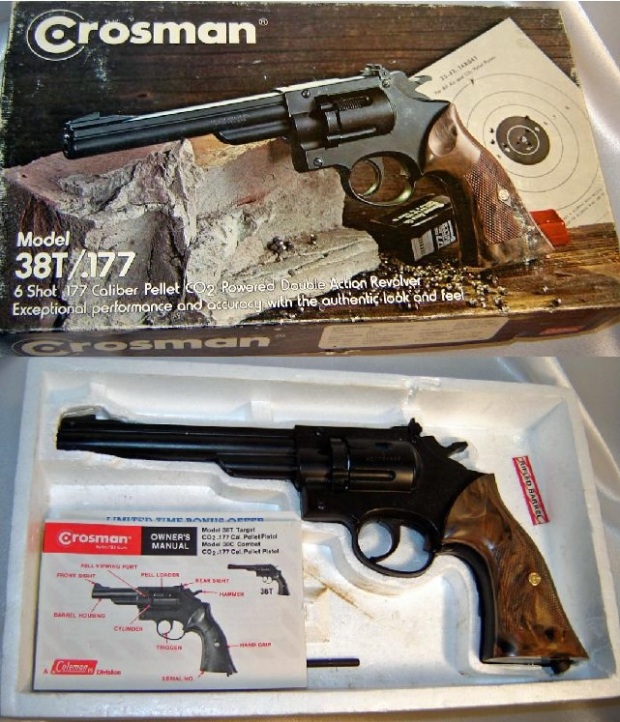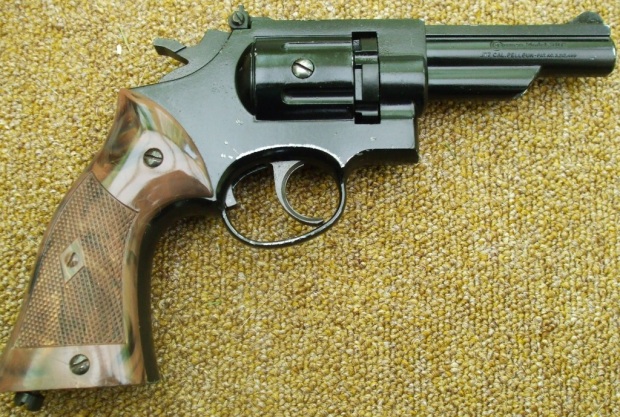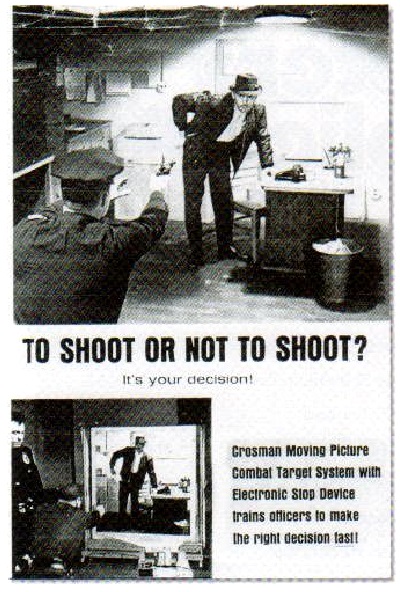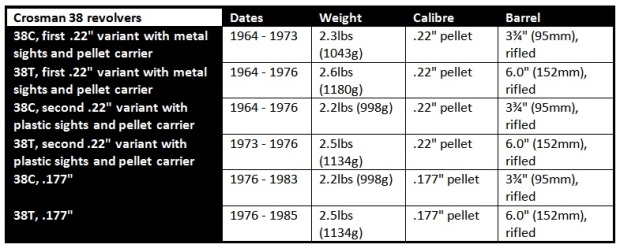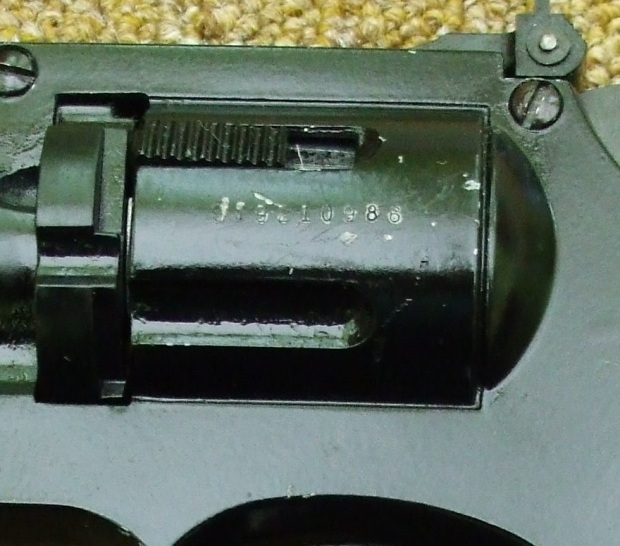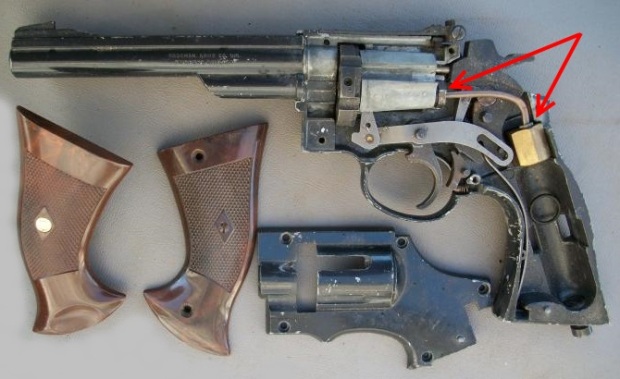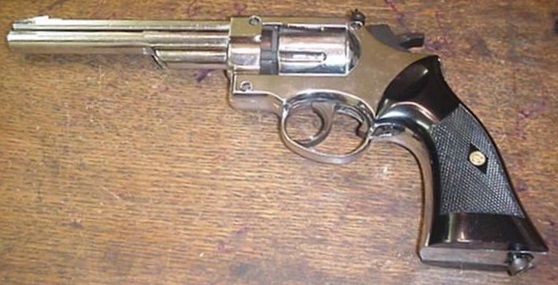CO2 and gas powered replicas
Crosman Airmag C11
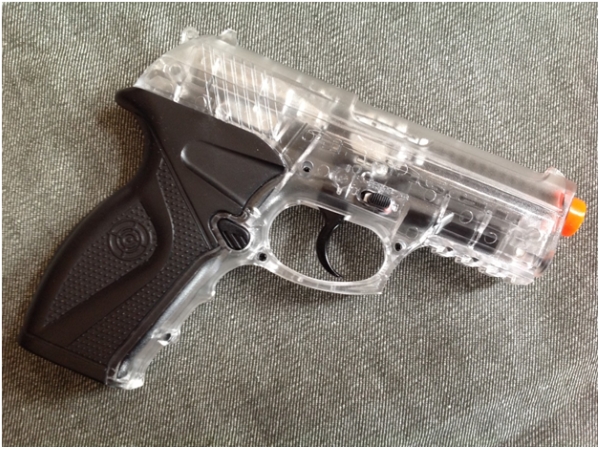 This is a CO2 airsoft made by Crosman. It is not an exact replica of any known model and with the transparent model it is even more difficult to make a comparison.
This is a CO2 airsoft made by Crosman. It is not an exact replica of any known model and with the transparent model it is even more difficult to make a comparison.
I didn’t know at the time that, a couple of years later, I would come across an Anics Beretta 9000 pellet pistol so, for the time being, the Airmag C11 was the placeholder of that model in my collection.
With a picture of a black C11 positioned above a Beretta 9000 (with an extended mag), it helps in seeing a more than passable resemblance between the two.
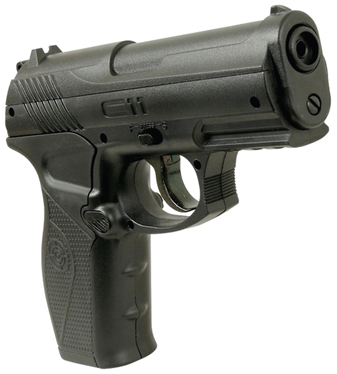
Crosman Model C11 in black.
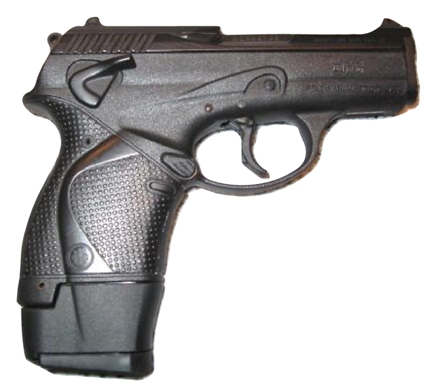
Beretta 9000 with extended magazine.
Beretta 9000 DAO
The Beretta 9000 is a polymer framed compact modern looking semi-auto that keeps the open top slide styling typical of the Beretta design. In 9x19mm it has a 12 rounds magazine. Two types of actions exist for that model: Double/Single or DAO ( double action only). It was introduced in early 2000.
Visual Accuracy
For sure the Crosman Airmag C11 is not the most exciting replica. It is a close match but not an exact replica as the Tokyo Marui series are. Furthermore the transparent body doesn’t help in seeing the resemblance.
Functional Accuracy
This is a non-blowback CO2 airsoft and consequently, it is more powerful than the spring airsofts that were discussed previously. On this pistol all the controls are molded in place except for the mag release and it shoots in DAO (double action only).
Shooting
If I remember correctly the accuracy was slightly better than the springers but I still used the same target size that was created for the Tokyo Marui pistols. The trigger pull is long but not heavy.
Quality and reliability
It is sturdy enough and I don’t remember having any jamming problems with it.
Overall Impression
If your interest is in realistic replicas, it would be better to look for other options if they are available.
Palco FirePower Raider CO2 (Clear Body)
When I bought this CO2 airsoft pistol there was no other replica of the HK USP available. Since it was not very expensive I purchased one as a placeholder in my collection for the firearm it represents.
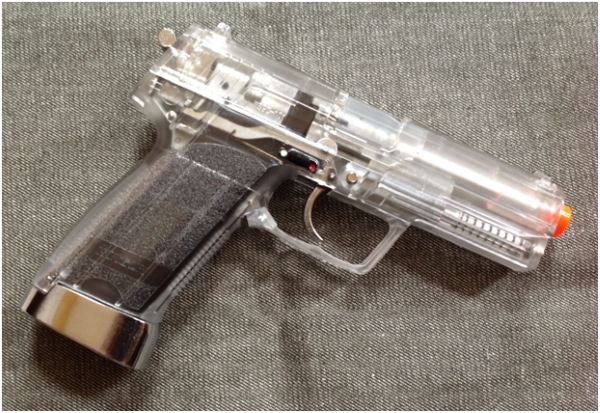
HK USP
Around 1989, Heckler & Koch (Germany) started working on a new design. The “Universal Self-loading Pistol” has been created as the P series replacement. Its introduction, in early 1993, started with the model USP40 (.40 S&W -13 rounds) followed by the USP9 (9x19mm-15 rounds) and finally the USP45 (.45 ACP-12 rounds) around mid-1995. The USP platform has a polymer frame and a Browning style action. A mechanical recoil reduction system insensitive to ammunition types is an important feature of the USP. The pistol also passed several environment tests and has corrosion resistant finish throughout. The USP can be disassembled in 7 majors groups for maintenance and has a total of 54 parts. With its modular approach, controls can be switched left or right and it offers a large variety of trigger styles.
Visual Accuracy
Again, with transparent models, it is interesting to see the internal mechanism (in this case CO2 instead of spring) but as a replica it is not satisfying. This airsoft is close enough to recognize the model but that is about it.
Functional Accuracy
This is a non-blowback CO2 airsoft pistol but the slide is moveable by hand, though this is only cosmetic. Most of the controls are molded in place, the magazine release works as it should and the gun has a good weight.
Shooting
If I remember correctly the accuracy is similar to the Crosman Airmag C11 so I still used the same target size that was created for the Tokyo Marui pistols. This pistol can be shot in double action or in single action if the hammer is cocked by hand.
Quality and reliability
If I remember correctly, it worked fairly well but I may have experienced some problems with the slide. It is moveable by hand and in some cases it could jam against some of the internal components. The option is there but in fact it might be better to leave it alone.
Overall Impression
To wrap up the case of the transparent airsofts I must say that, knowing now that most of the models I was looking for would eventually become available in metal BBs or pellets airguns, I would not have spent the money on unsatisfying pistols. On the other hand, it is a bit late to cry over spilled milk.
The Next Level
I was always on the lookout for new models or changes in the status of replicas. In 2009, I came across a site that opened some new possibilities for me.
I discovered 007 Airsoft which is a company located in Alberta, Canada (www.007airsoft.com). The airsoft pistols and rifles shown there were already imported in Canada and ready to be shipped, furthermore the site was advertising that all the items sold on the website were 100% Canadian legal.
That was excellent news for me because they had a fairly nice selection of green gas blowback replicas. The section that caught my eyes was the KJ Works display. Everything that was sold to civilians was mostly full metal except for a portion of the receiver that was tinted clear plastic. The fact that the plastic was tinted and also frosted was a game changer because now the shape of the pistol could be clearly seen (which was not the case with the transparent models shown earlier in the article).
That being said I had two concerns. The first one was the propulsion method which is green gas. After some research I discovered that green gas is propane already mixed with silicone. I didn’t want to be dependent on an expensive propellant that could be difficult to obtain and propane was solving the problem. I had to dig a bit more until I found an adaptor to purchase. The second concern was the fact that all those nice models were not cheap. Luckily, since I had been in near starvation mode for a while I had time to put some money aside. The downside was that after I got all I wanted my reserve would be completely depleted.
Not knowing if there would be some other reversal of fortune and that those models would disappear from the site for whatever reason, I decided to jump. I first bought a KJ Glock 27 to see what it actually looked like. After receiving it, I tried it and was completely convinced that I wanted more. It should be noted that the KJ Works line doesn’t have any trademarks or markings but I could live with that.
The next week, I placed an order for a KJ Glock 32C, KP05 Hi Capa and a KJ Ruger Mark I. Again I was not disappointed, so less than two weeks later I ordered another KP05 Hi Capa and KJ Glock 23.
I have to say that I have been impressed by the accuracy of these airsoft pistols. They are high quality mostly metal airguns and they feel solid. Groupings were not as good as with pellet airguns but a lot better than with the spring airsofts.
Since they were shooting propane gas, I didn’t want to use them in the house so they became my summer pistols for periods when I could shoot in the garage with the door opened for ventilation. Having a different trap for the plastic BBs than for lead pellets, I couldn’t use the same distance as for my airguns. Again I had an available distance of about 21 to 22 feet and this was similar to what I had with the airsoft springers. The new pistols having better performance, I made a new set of targets. This is the comparison between my pellet airguns targets and the gas pistol targets.
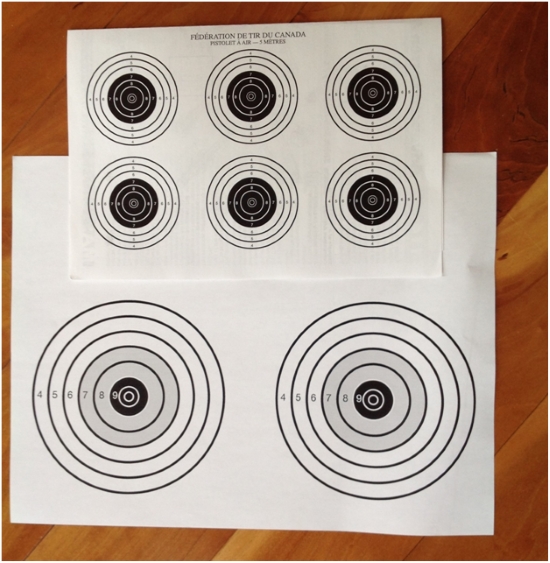 I will now present those gas models; they are not in the order of my purchases because I wanted to group all the Glocks in one section. I will start with the KP05 Hi Capa.
I will now present those gas models; they are not in the order of my purchases because I wanted to group all the Glocks in one section. I will start with the KP05 Hi Capa.
KJ Works KP05 Hi-Capa 1911
This is a really nice pistol even with portion of the receiver being clear tinted plastic. The fact that the KJW series has no markings contributes to uncertainty in identifying the corresponding Real Steel Handgun. 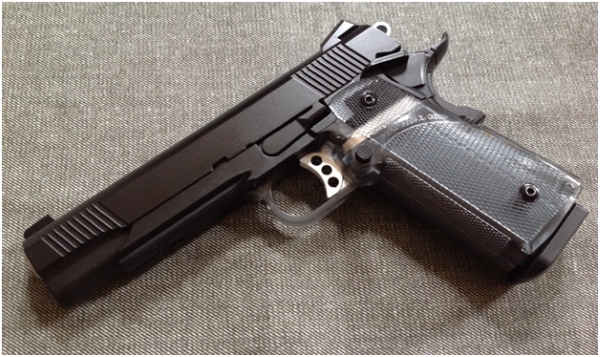
When I was preparing my PowerPoint slides for my collection, my assumption was that the S&W 1911 was the inspiration for the KJW model.
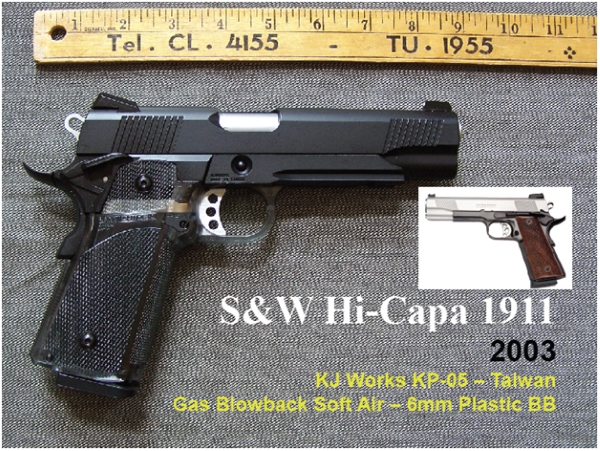
After more research, I started to doubt that I had the perfect match. I found three possible candidates: the S&W 1911, the Para Ordnance Black Ops 14.45 and the Springfield Armory 1911 MC Operator.
Real Steel Background
Smith & Wesson 1911
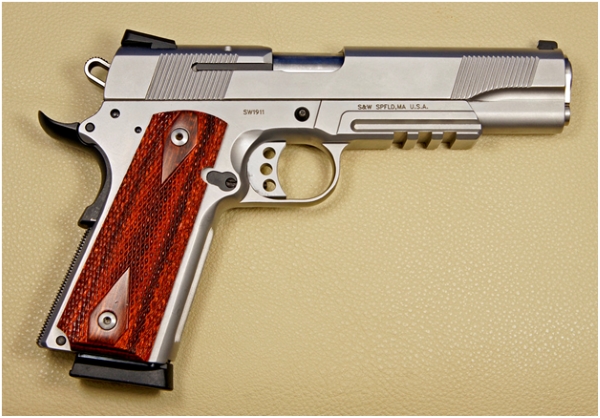
The SW1911 is a modernized variation of the classic M1911. It has a serration added at the front of the slide and an extended safety grip. It also sports a skeleton hammer and trigger. The S&W 1911 is available in a variety of frame/slide combinations and has a capacity of 8+1 rounds.
Para Ordnance Black Ops 14.45
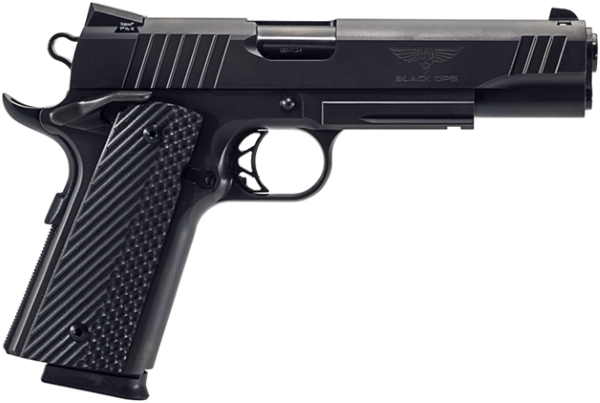
Para Ordnance pioneered the double stack single action. This version of the 1911 design has a 14 round double stacked High Capacity magazine. The frame and slide are both stainless steel. It has an integral accessory rail and a skeletonized hammer and match grade trigger. It seems that the original 8+1 round version was introduced around 2012 and the Hi Capa around 2015.
Springfield Armory 1911 MC Operator
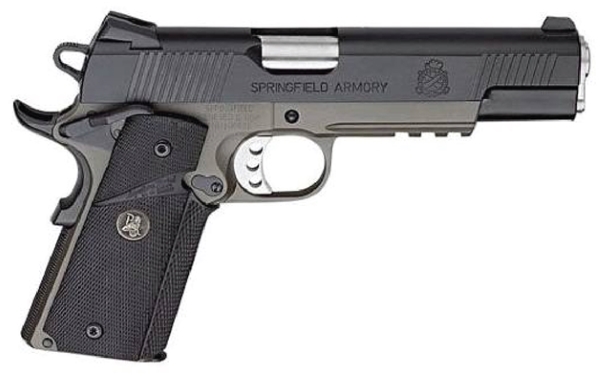 This pistol has a steel frame with an integral accessory rail and the 5 inch match grade barrel is stainless steel and it also has a light weight hammer and trigger. It seems to have been introduced around early 2000 and the intent was to compete in the bid for the Marine Corps Special operation Unit. It has a 7 round magazine.
This pistol has a steel frame with an integral accessory rail and the 5 inch match grade barrel is stainless steel and it also has a light weight hammer and trigger. It seems to have been introduced around early 2000 and the intent was to compete in the bid for the Marine Corps Special operation Unit. It has a 7 round magazine.
Visual Accuracy
The S&W 1911 is very close visually with the same shape at the front of the receiver, long beaver tail grip safety, thicker mag plate, similar hammer and trigger and dovetailed rear sight. What the S&W lacks is an ambidextrous safety and the other detail that detracts is the visible extractor. The Real Steel is only 8+1 rounds so it not actually a HiCapa, which has nothing to do with the visual accuracy but it is still a discrepancy.
Since the Para Ordnance Black Ops 14.45 is actually a HiCapa handgun (14 rounds) it should be a closer match but visually it is not quite right. It has a lot of similar characteristics with the KJW replica but the shape at the front of the receiver, the serrations and the hole pattern in the trigger are different.
So if the shape at the front of the receiver and the fact that it is an 8+1 handgun are ignored the Springfield Armory 1911 MC Operator would be the best visual match.
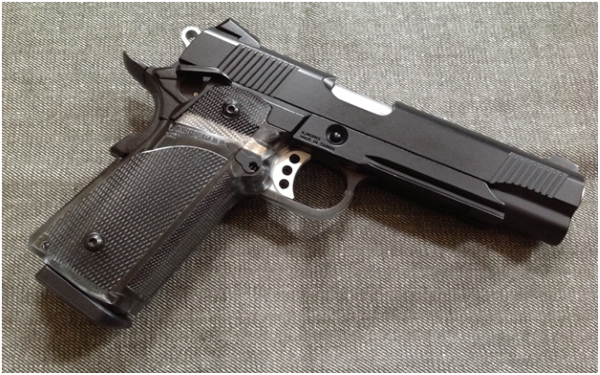 Functional Accuracy
Functional Accuracy
The pistol is a very realistic GBB (gas blowback) airsoft which has all the functional controls found on the firearm. The blowback is sharp and the single action trigger is very nice. The slide locks open on the last shot as it should and this model could easily be used to teach handgun safety training.
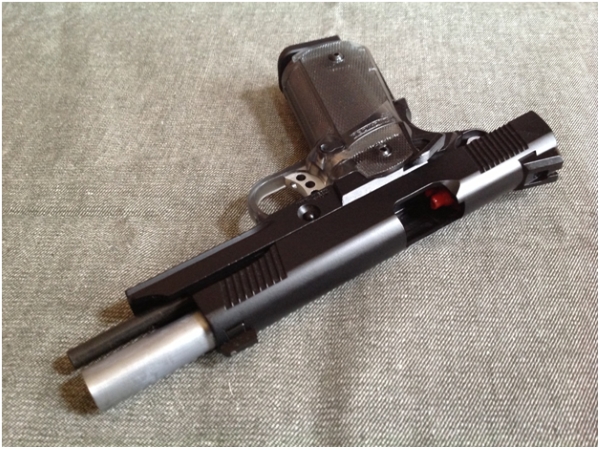
Shooting
The KJ Works KP05 is fairly accurate with 0.25g BBs. This fact is reflected by the size reduction of the targets shown a bit earlier in the article. The green gas is surprisingly efficient in these replicas even if the pressure is very low compared to CO2.
Quality and reliability
They are quality well-made pistols that could be expected to work flawlessly for a long time. The only weak part in that system is the plastic nozzle that loads the BBs and transfers the gas. I had previously some problems with the nozzle of a Cybergun metal BB blowback pistol but none yet with the KJW series so I will keep my finger crossed.
Overall Impression
I liked this replica so much that I bought a second one, so that I can practice shooting with both hands.
R-Gun Pete
Related pages:
Replica Pistols in Canada from the Post 1998 era – Part 1: Spring Powered Replicas
Replica Pistols in Canada from the Post 1998 era – Part 3: Ruger and Glocks

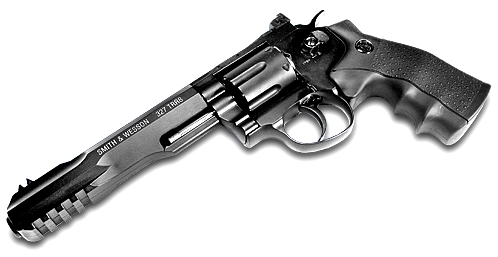 For some reason the Umarex Smith & Wesson M&P TRR8 revolver doesn’t seem to be a particularly popular or well-known replica. It’s an all-metal, 4.5mm BB shooter which internally looks very similar to the Umarex Ruger Superhawk and the Dan Wesson/WinGun series of revolvers. Like them, it features removable shell casings into which BBs are loaded. However, unlike these other revolver replicas, this one shoots like a laser. It’s one of the most accurate replica air pistols I have ever used, and that includes a number of pellet shooters with rifled barrels. How can a BB shooter be so accurate? Honestly, I have no idea but this is a replica worthy of attention from anyone who values precision shooting.
For some reason the Umarex Smith & Wesson M&P TRR8 revolver doesn’t seem to be a particularly popular or well-known replica. It’s an all-metal, 4.5mm BB shooter which internally looks very similar to the Umarex Ruger Superhawk and the Dan Wesson/WinGun series of revolvers. Like them, it features removable shell casings into which BBs are loaded. However, unlike these other revolver replicas, this one shoots like a laser. It’s one of the most accurate replica air pistols I have ever used, and that includes a number of pellet shooters with rifled barrels. How can a BB shooter be so accurate? Honestly, I have no idea but this is a replica worthy of attention from anyone who values precision shooting.